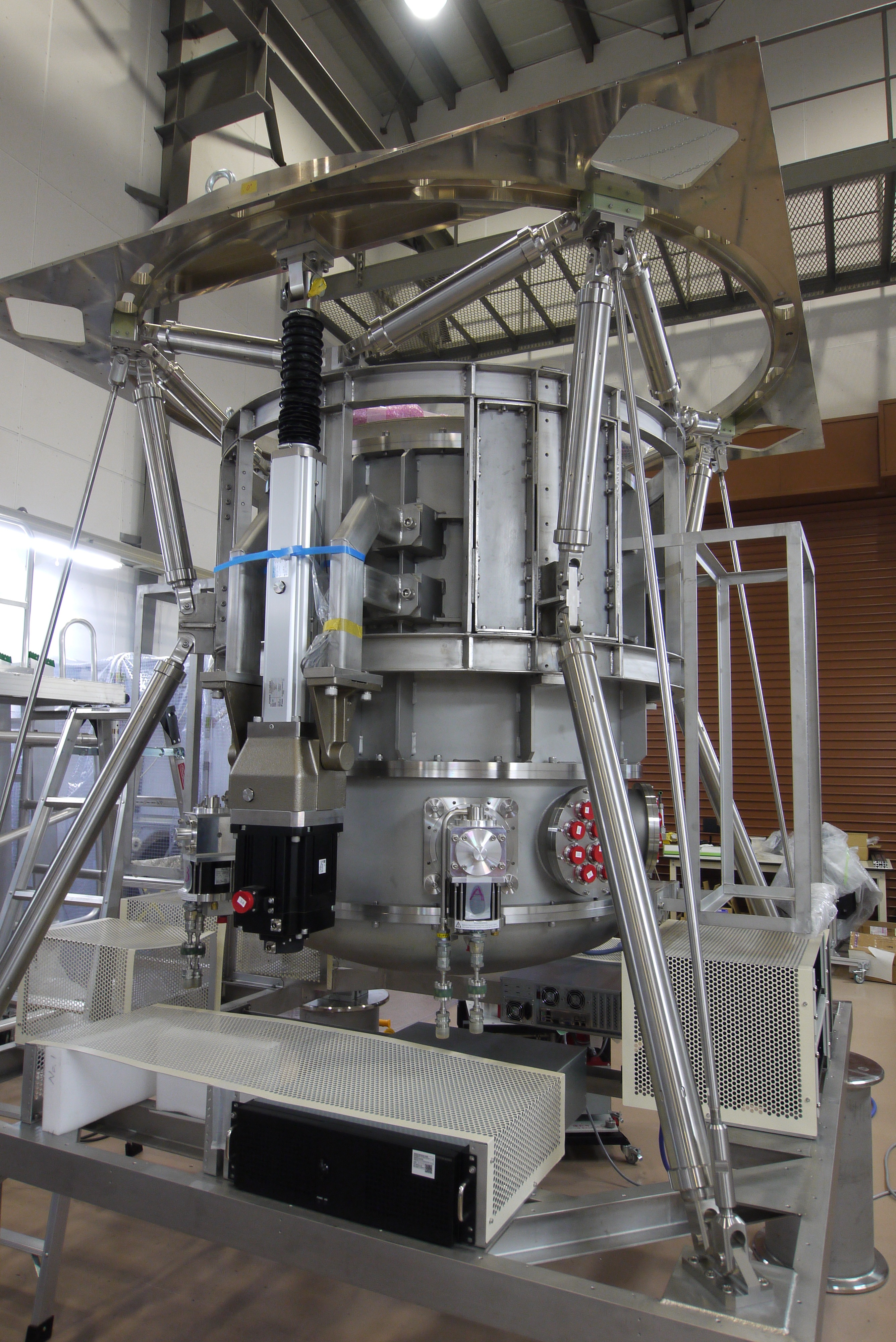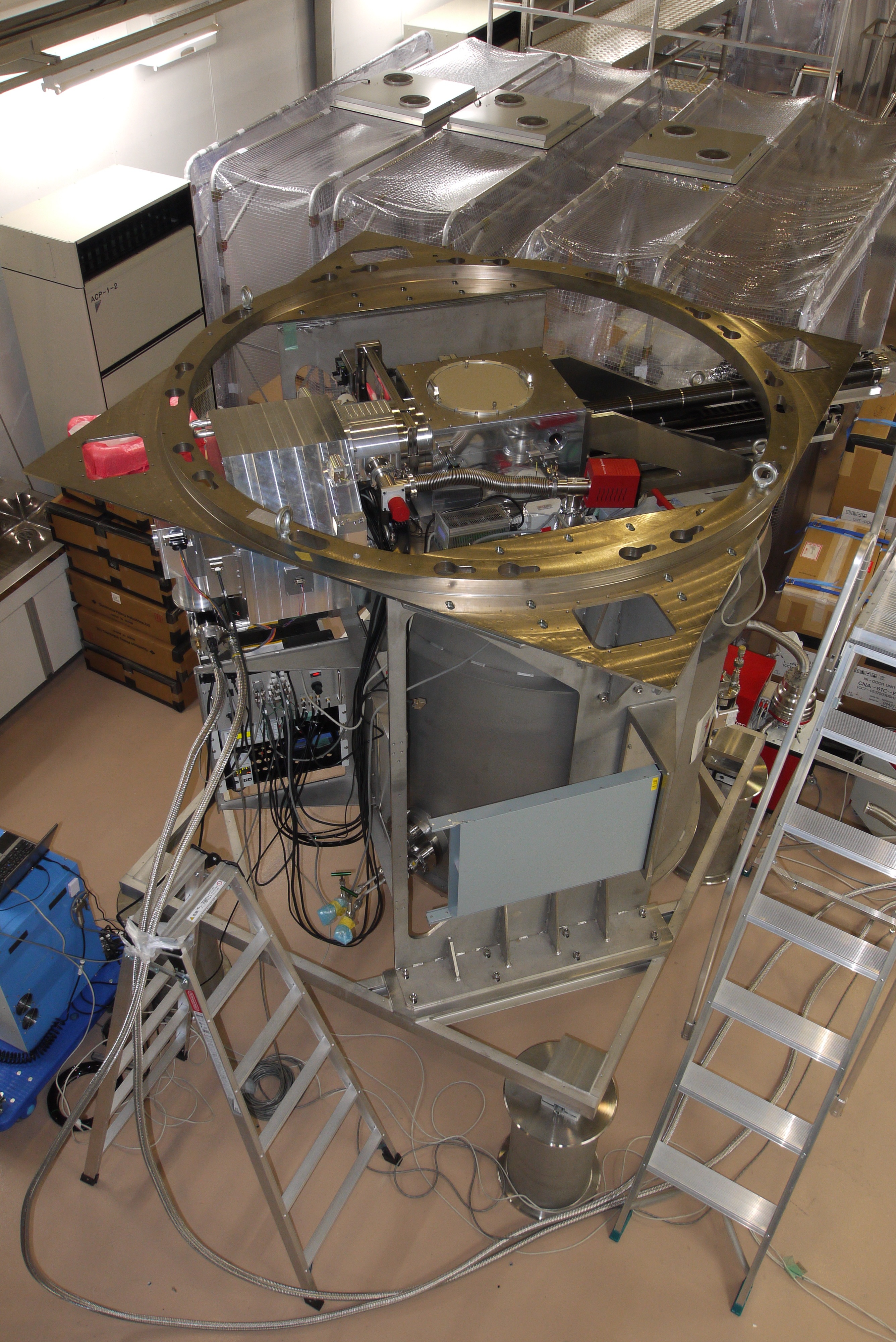
|
TAO Project |
|
The TAO project

|
6.5m TelescopeTo carry out efficient observations at its high altitude of 5640m, the 6.5m telescope is designed (1) to be optimized for infrared observations, which make best use of the low water vapor in the atmosphere, (2) to be operated remotely from the base facility to avoid harsh environmental effects on the human body, and (3) to have high cost-performance. The telescope has 3 foci to which infrared instruments are installed. The telescope, as well as the instruments, incorporates cutting-edge technologies to realize observations with the best performance. MirrorsPrimary MirrorThe primary mirror is a light-weight honeycomb mirror, made of borosilicate glass (BSC glass by Ohara, Inc.), developed by Steward Observatory Mirror Lab at the University of Arizona. The mirror, having enough thickness (71cm at the outer edge and 39cm at the inner edge) to sustain its shape, incorporates a honeycomb structure to reduce its weight. The very fast F-ratio of the mirror (F/1.25) contributes to making the the telescope and the dome compact. To realize such a fast shape, the mirror is cast on the rotating table (spin-cast). Secondary MirrorTo achieve the best performance, the secondary mirror, which is used for all foci, is optimized for infrared observations. As a result, exchanging the secondary mirror becomes unnecessary and its impact on operations is reduced. In addition, the latest technology in high-speed actuators will be used to modify the shape of the deformable secondary mirror surface. This function, together with the adaptive optics system, will correct atmospheric turbulence and provide sharp image quality. InstrumentsMIMIZUKU: the mid-infrared imager and spectrograph at the Nasmyth focus
As the TAO telescope is located at an altitude of 5640,
it is expected to have high performance at mid-infrared wavelengths,
which will be covered by MIMIZUKU (Mid-Infrared Multi-field Imager for
gaZing at the UnKnown Universe).
MIMIZUKU has the following three features;
(1) fully covering mid-infrared wavelengths from 2 to 38 microns,
(2) a spatial resolution of 1 arcsec at 30 microns,
which is the highest resolution ever achieved at this wavelength, and
(3) achieving accurate relative photometric observations using a newly developed "Field Stacker" unit.
Covering a very wide wavelength range from 2 to 38 microns, MIMIZUKU
takes advantage of the potential of the TAO site as the world's best environment for
infrared observations.
Also, by incorporating on a regular basis for the first time
a Field Stacker System, which will combine two different
fields-of-view into one image,
it will be able to measure with high accuracy temporal variations in the mid-infrared.
Detailed specifications are available at
http://www.ioa.s.u-tokyo.ac.jp/TAO/mimizuku/pub/ SWIMS: Simultaneous two-color MOS spectrograph at the Nasmyth focus
SWIMS (Simultaneous-color Wide-field Infrared Multi-object Spectrograph)
is a near-infrared spectrograph capable of wide-field imaging and
of multi-object-slit (MOS) spectroscopy from 0.9 to 2.5 microns.
With its general-purpose specifications, SWIMS is expected to
cover a major part of the scientific objectives of the TAO telescope.
It has a wide field-of-view of 9.6 arcmin diameter with 0.126 arcsec/pix,
and provides simultaneous observations at two wavelength ranges
(blue arm: 0.9-1.4 micron / red arm: 1.4-2.5 micron)
for imaging or MOS spectroscopy.
A unique point of SWIMS is its capability to take the spectra of objects from
0.9 to 2.5 microns simultaneously without any break, which makes best use of the continuous atmospheric window in the near-infrared wavelength at the TAO site.
SWIMS consists of the MOS exchanger unit to handle multi-object slits, the main dewar which keeps the optics and the detectors in a cryogenic environment, and a support structure to keep the whole instrument in its proper shape as well as to hold peripheral equipment.
Detail specifications are available at
http://www.ioa.s.u-tokyo.ac.jp/TAO/swims/index.php?Summary
Copyright(c) 2007-2015 TAO Project, Institute of Astronomy, Graduate School of Science, University of Tokyo
|
![TAO]ΎTΟiXPb`Abvj](image/telescope-en.jpg)



